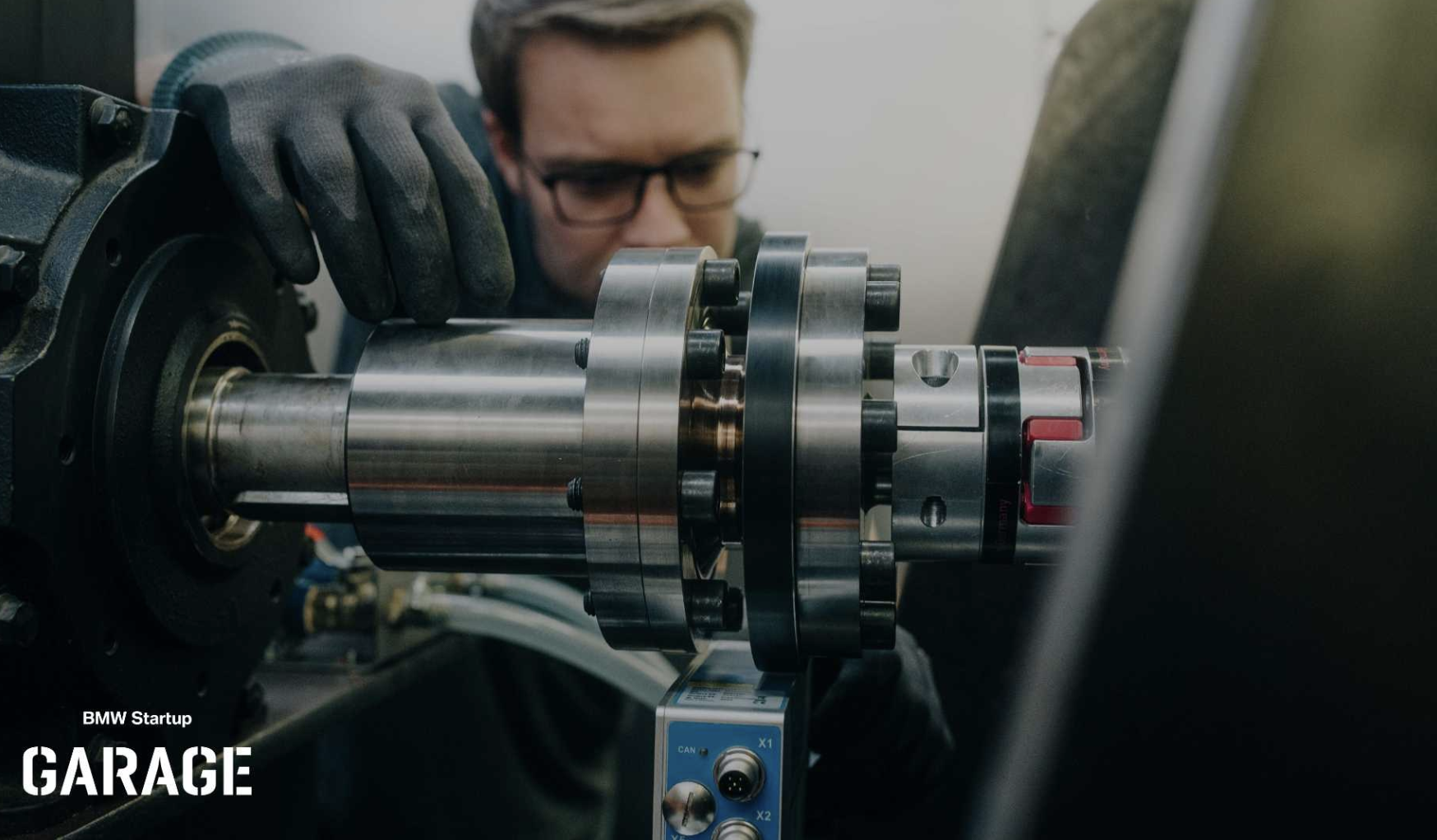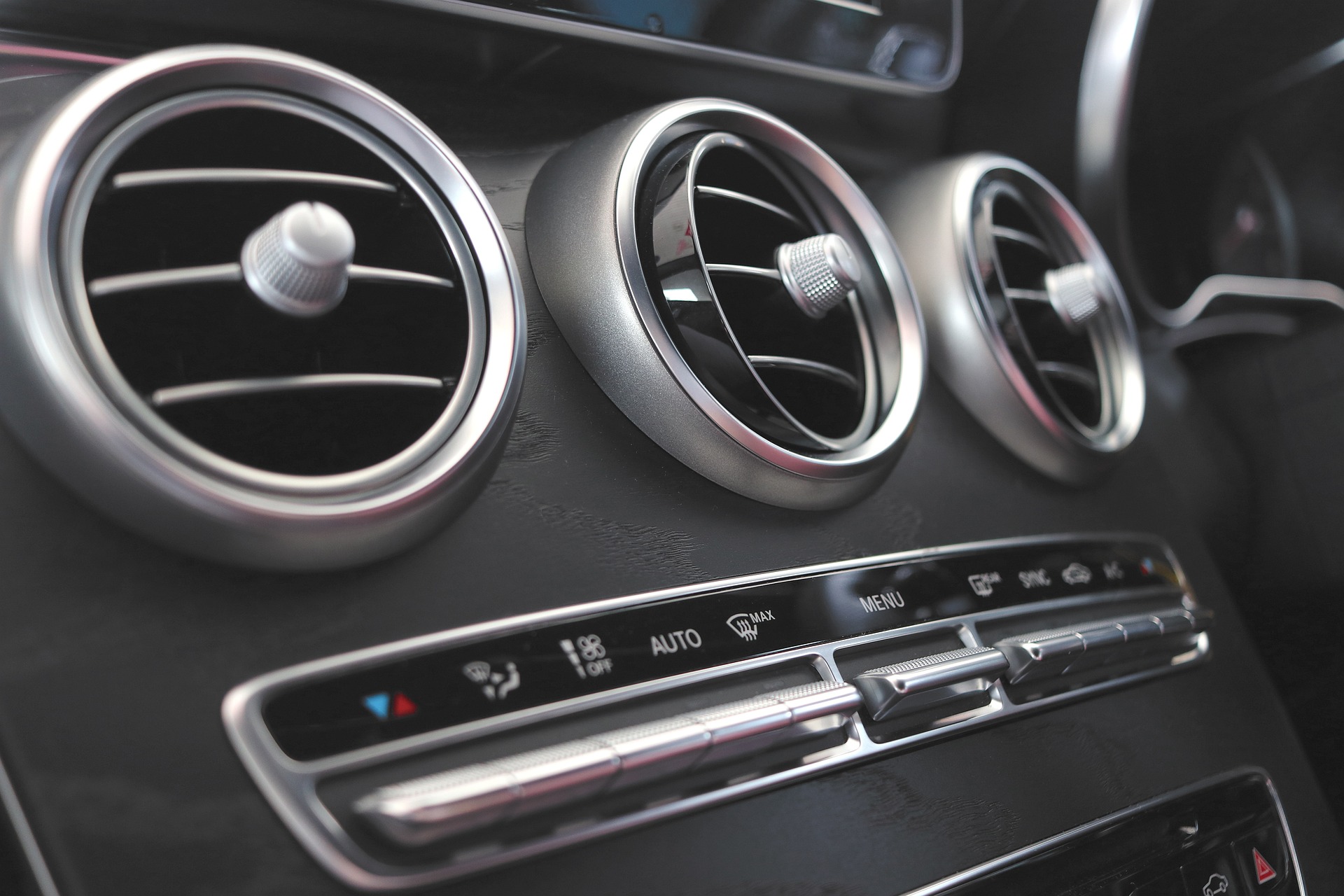Why does my car smell like burnt rubber?


If your vehicle has an overpowering burnt rubber smell, there could be several reasons for this unwanted odor. One potential cause is that the car’s engine belt or accessory drive may have failed, causing friction and ultimately producing the burnt rubber scent. Other possible causes include electrical malfunctions and fluid leaks, which can create a similar odor. It is crucial to identify and address any of these issues early on to avoid potentially hazardous situations.
Continuing with the potential sources of a burnt rubber smell in a car, the transmission or clutch could also malfunction leading to this particular scent. Furthermore, overheating brakes can also emit a smoky aroma that resembles burning rubber. Sometimes road debris heating up underneath the automobile due to close contact with various surfaces can lead to a pungent smell. In addition, poor quality tires can overheat when driving fast leading to melted rubber.
In some cases, an undesirable aroma inside the vehicle might not originate from its engine bay area but come from elsewhere such as moldy seats, contaminated air conditioning systems or rotting food in door pockets/hidden corners within the car’s cockpit leaving one feeling embarrassed while giving rides.
Don’t ignore or neglect significant smells emanating from your car’s interior; attend to them promptly; it could save you considerable expense and discomfort down the line when it becomes necessary to fix severe problems with your vehicle.
Engine-Related Issues
1 – If you notice a peculiar burnt-rubber smell emanating from your car, it may be indicative of an engine issue.
2 – Such an issue could result from oil leaks dripping onto hot engine parts causing them to burn or worn-out drive belts rubbing against engine components. A ruptured fuel pressure hose could also lead to a gasoline smell that is similar to burning rubber.
3 – Another possible cause of a burning rubber smell in the car is a failed or damaged part in the transmission. The clutch facing, torque converter, or transmission fluid overheating could also cause the odor.
4 – To eliminate the smell, you should identify the root cause of the problem and rectify that issue. This may involve repairing or replacing a damaged part, cleaning the engine compartment, or changing the transmission fluid. Timely maintenance and routine inspections can prevent most engine-related issues.
Blown Head Gasket
An engine-related issue that car owners dread is a damaged gasket that separates the engine block and cylinder head. The damage, called ‘blown head gasket,’ can cause coolant leaks, engine overheating, and reduced performance.
When a blown head gasket occurs, it leads to exhaust gases entering the coolant system or the combustion chamber. The symptoms of such damage include white smoke coming out of your car’s tailpipe, overheating and bubbling inside the coolant reservoir, and oily substances on its surface.
Addressing a blown head gasket requires extensive repair work where mechanics remove various components such as fuel rails, intake manifolds, camshafts, and valves to access the damaged part of the engine. Repairs can also require new parts such as replacement gaskets or even an entire engine to remedy severe damages.
It is crucial to maintain regular oil checks in preventing damages to your vehicle’s delicate components like its gaskets. This involves monitoring oil levels regularly and ensuring it maintains its color and viscosity standards. Another way to prevent blown head gaskets is by addressing signs of overheating immediately by pulling over safely when temperature warnings arise.
Car owners can avoid blown head gaskets through proper maintenance methods like regular oil checks and addressing warning symptoms when they occur promptly. However, if damages do occur, it is essential to seek qualified mechanics with experience in vehicle repair services for practical remedial options suited for your car make and model’s needs.
Overheated Engine
An overheated motor can be a perilous issue that requires immediate attention. The high temperature in the engine blocks lubricant circulation and can cause irreversible damages, resulting in expensive repair costs. Regular maintenance and checking coolant levels can prevent such predicaments.
When a vehicle is operating at high speeds or carrying heavy loads, the engine produces more heat than it can dissipate, causing it to overheat. This situation can also occur due to low levels of coolant fluid or a malfunctioning cooling system. If the temperature gauge rises above normal or steam starts coming from beneath the hood, immediately pull off to a safe location and turn off the engine.
Ignoring an overheated engine can lead to catastrophic consequences, such as damaged pistons, warped cylinder heads and even destroyed engines. Moreover, it’s not just the cost of repair that needs to be taken into consideration but also the potential risk of endangering yourself or other drivers by driving on an overheated vehicle.
Damaged Catalytic Converter
A damaged exhaust emission control device can result in reduced performance and increased emissions. The catalytic converter, a vital component in the system, is responsible for converting harmful pollutants into harmless gases through a chemical reaction. If damaged, it cannot perform its function effectively, resulting in higher levels of pollution. A noticeable decrease in fuel efficiency and a rough idle are other symptoms of this problem.
To prevent damage to the catalytic converter, it is important to maintain regular maintenance routine for your vehicle. Ignoring warning signs such as an illuminated check engine light or strange noises from the exhaust can lead to costly repairs later on. It is essential to replace the faulty components of the exhaust system immediately once identified.
Replacing or repairing a damaged catalytic converter is not a simple task; it requires technical expertise and specialized equipment. An inexperienced person attempting this process could make things worse by causing further damage to the engine. In severe cases, a replacement can be quite expensive.
A faulty catalytic converter was found to be the most common cause of failed emissions tests according to data compiled by the Environmental Protection Agency (EPA). Continuous ignoring of warning signs that indicate damages could lead vehicles failing regulatory inspections even after repair work has been performed.
Worn Out Drive Belt
If your vehicle experiences unusual sound from the hood, it might be due to a neglected or worn-out belt that connects key components of the engine. Failing to address this issue can cause further damage.
Here is a quick 5-step guide to diagnosing and fixing a worn belt in your vehicle:
- Locate the damaged belt.
- Assess the damage level.
- Select the right replacement part.
- Remove the damaged drive belt and install the new one according to manufacturer specifications.
- Test-drive to ensure everything works well.
When choosing a replacement belt, consider its size, shape, and material. Aiming for a tight-fitting belt is preferable as excessive slack can cause it to fall off or malfunction. Apart from belts, also consider other engine components like pulleys and tensioners – these also contribute significantly towards performance and operation.
It’s important to note that driving with a worn-out belt puts extra stress on various parts of the engine. This increased strain can lead to overheating or even complete system failure. Regular checks and maintenance are crucial to prevent such issues.
According to CarCare.org, Most belt problems result from improper tensioning.
Regular inspection or professional advice can help you determine if there is an issue before it gets out of hand.
Keeping an eye on your vehicle’s belts and addressing issues promptly should keep you moving without any unnecessary headaches!
Leaking Hoses
Rubber pipes that transport liquids or gases may develop cracks or holes that release fluid or air. Such defects are known as ‘Leaky Tubes’. If not addressed, this can lead to engine overheating, reduced performance and even breakdowns.
To detect if a hose is leaking, inspect it for visible signs of damage, such as bulges, cracks, or fraying. Additionally, check for any traces of coolant, oil, or fuel stains under the car. Sometimes the liquid may pool around the hose clamps instead of the pipe itself. In that case, tighten the clamps or replace them if they are damaged.
Leaking hoses can also result from age-related wear and tear, exposure to heat or chemicals, improper installation or contact with sharp surfaces. To prevent this issue from occurring frequently, consider replacing your hoses every 4-5 years or sooner if you notice signs of deterioration.
Pro Tip: Before working on any cooling system repairs involving hot fluids, make sure to let the engine cool down enough so you won’t get burned by steam or splashing liquid. Also, wear eye protection and gloves to avoid injury and contamination.
Brake System Problems
One possible reason for the burnt rubber smell in your car could be related to issues with the braking system.
- Worn out brake pads or shoes can cause a burning smell from the friction with the rotors or drums.
- Damaged or stuck calipers can cause a burning smell by creating too much friction.
- Cracked or damaged brake hoses can cause the fluid to leak and create a burning smell.
- Overheating of the braking system due to excessive use or heavy loads can cause a burning smell.
- Worn out wheel bearings can cause excessive heat and create a burning smell.
- Contaminated brake fluid can break down and create a burning smell.
Regular brake inspections and maintenance can help prevent potential issues with the braking system, such as the burning smell. Additionally, brake pads should be replaced before they become too worn out to prevent potential damage to the braking system.
Pro Tip: Keep an eye (and nose) out for any unusual smells or sensations while driving, as they can be a sign of potential issues with your car’s braking system.
Worn Out Brake Pads
For optimal car safety, the braking system requires careful maintenance. Over time, brake pads can become worn and lose their effectiveness, resulting in a dangerous situation on the road. The loss of braking capacity can be caused by various factors such as friction, corrosion or high heat from prolonged use.
As brake pads begin to wear out, they produce a high-pitched squealing sound which indicates that it is time for them to be replaced. It’s crucial to note that ignoring these warning signs may result in costly damages to other parts of the braking system like the rotors, drums or calipers, ultimately requiring more extensive repairs.
If you’re unsure whether it’s time for new brake pads or question your own judgement, professional installation services are advised.
Pro Tip: Don’t wait for your brakes to show signs of failure before attending to them; consistent servicing will ensure optimal system functionality.
Sticking Brake Caliper
Calipers that stick in one position are a common issue with the brake system. This problem can cause significant damage to the vehicle and can lead to accidents. To prevent this, there are several steps that you can take:
- Diagnosis: First, identify which caliper is sticking. You can do this by checking the temperature of each rotor after driving your car.
- Lubrication: If your caliper has a slider pin, lubricate it with an approved lubricating substance.
- Replacement: In case lubrication does not work or the caliper is corroded, replace it as soon as possible.
- Inspection: After any repairs or replacements, check the entire system to ensure everything is functioning correctly.
It’s essential to address this issue immediately because a sticking caliper can cause uneven wear on brake pads and rotors, leading to costly repairs down the line.
To prevent a stuck caliper from occurring again in the future, maintaining routine inspections and making sure they are properly greased and free of debris is key.
In recent years, even though it’s rare for a brand-new car to experience brake failures in general, many car manufacturers have recalled some models due to sticking brake calipers. One example was when Mazda recalled nearly 4000 vehicles in Australia as their rear brake pads dragged against their rear rotors causing an overheating problem resulting in fire risk.
Malfunctioning Brake Proportioning Valve
The brake system’s ability to distribute hydraulic pressure evenly is vital to an effective stop. When the brake balance between front and rear wheels gets compromised, problems arise. A malfunctioning proportioning valve can cause inconsistent braking and uneven tire wear, leading to a dangerous driving experience.
The brake proportioning valve regulates the flow of fluid between the front and rear brakes. A malfunctioning valve may cause a biased distribution of the braking force that may result in skidding or lock-up of one or more wheels during sudden stops, especially on wet or slippery roads. Faulty wiring or links can also affect the valve, leading to sudden changes in brake performance.
To prevent a malfunctioning brake proportioning valve, experts recommend regular maintenance checks such as ensuring proper fluid levels, cleaning valves by flushing out any debris from the brake lines, and performing routine checkups on wheel bearings and suspension systems.
Pro Tip: In case you suspect erratic braking or feel difficulty in stopping your vehicle suddenly, seek immediate help from a professional mechanic before continuing to drive as it could be caused due to a faulty proportioning valve issue that only an expert can diagnose and fix efficiently.
Electrical Issues
Electrical issues are a common occurrence in modern-day vehicles. These malfunctions occur when there’s a problem with the electrical system. The electrical system includes complex wiring, sensors, fuses, voltage regulators, and alternators, among others.
When there is an electrical malfunction, one of the first signs that car owners may observe is a burning rubber smell emanating from their car. In fact, this smell often indicates a burning wire or insulation. This issue may be due to a short circuit somewhere in the wiring system or a faulty component in the electrical system.
It’s worth noting that electrical issues can cause serious problems if left unchecked, such as engine stalling, failure to start, or even a car fire. Therefore, it’s essential to consult a professional mechanic to inspect the electrical system and resolve any underlying issues.
Pro Tip: Always go for regular car checkups to ensure that every system is working correctly, especially the electrical system, to avoid any dangerous consequences.
Failing Alternator
The electrical system is an essential component in any vehicle. It’s responsible for functioning the car and its features. When a critical part such as the energy converter in your car, also known as a depleted power generator failing to execute duties or overlooks charging activities, it is referred to as a Faulty Alternator.
A broken alternator can cause several damages if not dealt with immediately. A warning sign of a failing alternator includes dimming lights on the dashboard or faulty headlights. Upon detection of such warnings, do not hesitate to seek professional help.
Furthermore, keeping track of regular maintenance will ensure prevention of damage and extended life span for your car’s electric parts. Follow instructions on battery replacements and put in mind that most cars demand different types of energy converters and operating voltage ranges.
It is crucial to note that an overreliance on electronic devices without proper monitoring of their power consumption may overload your generator and cause breakdowns mid-travel hence; always be mindful while using them.
Don’t let a malfunctioning alternator hinder your driving experience—the safety concerns of traveling with insufficient electricity are severe. Seek professional assistance whenever you detect early signs mentioned above, avoid preventable accidents!
Damaged Wiring
Electrical problems can arise from errors such as torn or frayed wires. This malfunctioning of electrical conductors can cause short-circuits, reduction in power supply and even fire hazards. It’s vital to monitor the state of wiring, regularly, especially where they are exposed.
Damaged connections result from numerous factors like environmental stress, incorrect handling during installations or vandalism. When the coverings on cables wear and tear, they become exposed to electricity flow and can cause leakages and voltage drops among other issues.
By testing electrical wiring often with a wire tester tool, you can determine the functionality of wires and manage your repair needs. Furthermore, prompt detection of broken wiring improves safety measures around your property.
Overheated Fuse Box
The electrical component responsible for distributing power to your home is susceptible to overheating. This often leads to an issue with the circuit breakers, which can cause blackouts and power interruptions. When a fuse box overheats, it can be dangerous and cause a fire hazard if not addressed immediately. Therefore, regular maintenance of the electrical components is necessary to avoid safety hazards.
Furthermore, the primary reason behind a fuse box overheating could be overloading of circuits, water damage or incorrect installation. Try not to overload the circuits by using too many appliances simultaneously as this can result in tripping of circuit breakers. In case of water damage or improper installation, seek a professional electrician for repair work.
It’s vital to note that if left unchecked, an overloaded fuse box cannot just result in a blackout but also can become hazardous for an individual’s safety. One must be extra cautious when dealing with electrical components as they can quickly become high-risk areas.
A resident named John had been experiencing frequent power cuts in his house despite replacing all his light fixtures with CFLs. One day he discovered that his fuse box was getting excessively hot leading to most of his lights being turned off automatically. After seeking professional help from an electrician, he found out that the root cause was due to one of his appliance cords being faulty and drawing too much current from the circuit thereby causing the circuit breaker to trip every time it was connected.
Therefore keeping everything safe including your friends and family is crucial!
Transmission Problems
As a car owner, you may experience a unique burnt rubber smell emanating from your car, typically indicating significant issues with the transmission system. This crucial component ensures your car shifts gears correctly, allowing for a smooth drive. An issue with the transmission could lead to unsafe driving conditions, damage to other parts and even total vehicle breakdown.
Continuously smelling burnt rubber could be an indicator of several transmission problems. A faulty transmission or worn-out clutch functions can overheat the system, leading to burning odors. Loose transmission seals or damaged gaskets allow transmission fluid to leak, creating a burning smell as it drips and burns on the exhaust system. Delayed or abrupt gear shifting can also create excess pressure on the transmission, leading to burning odors. These scenarios require immediate attention as transmission damage is expensive and the safety of the vehicle and passengers is at risk.
It is essential to know the various transmission problems and their causes to avoid severe damage. Some other signs of transmission issues include warning lights on the dashboard, strange noises from the engine, transmission fluid leaks or low fluid levels, and changes in driving performance. It’s best to consult your mechanic once you detect any transmission issues.
A friend of mine neglected his vehicle’s transmission problems and paid a high price. One evening, while driving on the highway, the car’s transmission suddenly failed, causing him to lose control. Thankfully, he emerged unscathed, but the car was severely damaged.
Overworked Clutch
A clutch is a crucial component in manual transmission cars that engages and disengages the engine from the wheels. The issue of an overworked clutch arises when the driver excessively uses it or engages it improperly, leading to premature wear and tear. This can cause the clutch to slip, resulting in power loss and unwanted vibrations.
To avoid an overworked clutch, drivers should ensure they use it only when necessary and engage it smoothly. Avoiding inching forward in heavy traffic for long periods can also reduce friction on the clutch disc.
Additionally, a worn-out clutch plate or cable can also cause an overworked clutch. Regular maintenance checks are crucial to identify such issues early on and avoid significant damage to both the car and the driver’s wallet.
It is vital to note that an overworked clutch can lead to further transmission problems if left unresolved. Therefore, drivers should address any issues immediately by visiting a professional mechanic.
According to CarCare.org, a non-profit organization dedicated to educating drivers about car maintenance, “The average life of a clutch is approximately 100,000-120,000 miles.”
Faulty Transmission Solenoids
When your vehicle’s transmission is not shifting correctly or starts exhibiting strange behavior, it may be due to a malfunctioning solenoid within the transmission system. Solenoids act as a switch, controlling the flow of transmission fluid throughout the system.
- Malfunctioning solenoids can cause rough shifts, delayed engagement, and slipping gears.
- If left unaddressed, they may even cause long-term damage to your vehicle’s transmission.
- The cost to repair or replace solenoids can vary depending on the make and model of your vehicle.
- It is crucial to address any issues with your car’s transmission before further damage is done.
- Regular maintenance checks can help identify possible problems early on.
- Solenoid repairs should always be handled by a professional mechanic with experience in transmission repairs.
In addition, it’s important to note that failing to address solenoid issues in a timely manner can lead to more severe problems down the line. Regular check-ups and preventative maintenance can go a long way in preventing these types of expensive repairs.
If you suspect that there may be an issue with your car’s transmission or solenoids, don’t hesitate to have it inspected by a reputable automotive repair shop. The longer you wait to address these issues, the more costly and time-consuming they are likely to become.
Failing Torque Converter
A torque converter is a crucial part of an automatic transmission system that transfers power from the engine to the wheels. When this component malfunctions, it leads to a decrease in vehicle acceleration and causes the transmission to shift abnormally. Symptoms may include vibrations or shudders when driving at low speeds and difficulty accelerating.
Problems with the torque converter can be caused by wear and tear, overheating, or fluid contamination. Regular maintenance such as changing the transmission fluid can help prevent issues from occurring. If problems persist, replacing or rebuilding the torque converter may be necessary.
It’s important to address failing torque converters promptly as ignoring the issue may cause further damage to other components in the transmission system and lead to expensive repairs down the line. As always, consult a professional mechanic for proper diagnosis and repair guidance.
Remedies for the Burnt Rubber Smell
As a car owner, dealing with a burnt rubber smell can be frustrating. Here are some remedies to eliminate this unpleasant odor:
- Check if the smell is coming from the engine or tires. If it’s the tires, they may need to be replaced. If it’s the engine, check the belts and hoses.
- Clean any debris from the engine compartment. Leaves or other materials can accumulate and burn, causing the smell.
- Use an odor eliminator specifically designed for cars. Look for products that contain activated carbon, which can absorb the odor molecules.
- Air out the car by opening windows and running the AC on recirculate for a period of time. This can help remove the smell from the interior of the car.
It’s important to address the problem promptly, as a burnt rubber smell can be an indication of a larger issue with your car. Remember to maintain regular maintenance on your vehicle to prevent this issue from occurring in the future.
Save yourself from the burnt rubber aroma and your mechanic from a headache – get your car inspected ASAP!
Have Your Car Inspected by a Mechanic
Analyze the car’s systems and mechanical parts by consulting with a certified car technician. This approach will help you identify and rectify issues that could be causing the burnt rubber smell in your vehicle. A skilled mechanic can look into different components, including the drive belt, transmission, brakes or other motor parts that might be producing the smell.
It is essential to have your car serviced at regular intervals to ensure its proper maintenance and functioning. Performing preventative measures to keep a check on specific problems in advance can prevent unexpected breakdowns and expensive repairs later on. Scheduling an appointment with an expert technician should be at the top of your priority list if you detect a burnt rubber smell inside your vehicle.
Booking an assessment with a reliable auto repair shop gives you access to professional equipment, tools and services necessary for troubleshooting automotive complications and repairs. Reputable garages like Jiffy Lube, Goodyear Auto Service Center, Firestone Complete Auto Care offer customized solutions diagnosing all types of wear-and-tear issues in vehicles quickly.
Research has demonstrated that unaddressed burnt rubber smell may lead to several health hazards such as asthma and respiratory infections in drivers and passengers. Plan out routine maintenance checks-ups from experienced technicians year-round to fix problems such as this one promptly.
According to Caranddriver.com, some reasons for burnt rubber odor may include worn brake pads rubbing against rotors, friction between loose belts or pulleys adds extra heat creating the pungent smell.
Check and Replace Worn Out Car Parts
Car components wear out over time and cause burnt rubber smells. Keep your vehicle running smoothly by inspecting and restoring worn-out parts.
- Start by examining the vehicle’s tires, brakes, and transmission system.
- Check for cracks, bulges and punctures in the tires.
- Inspect brake pads, rotors or drums, calipers and master cylinder for signs of wear.
- Ensure that transmission fluid levels are adequate and check for leaks.
- Try replacing parts such as worn-out tires, brake pads or a malfunctioning transmission system if problems persist.
- Remember to seek professional assistance if all else fails.
Furthermore, maintaining a log of when you checked each car part can prevent future burnout smells in your car.
Don’t miss out on the opportunity to keep your car running smoothly with up-to-date parts and precautions taken to avoid future foul odors.
Regularly Maintain Your Car
Regular car maintenance is essential to prevent burnt rubber smell and ensure a smooth driving experience. Follow these five steps for properly maintaining your car:
- Check your car’s oil levels regularly, topping up when necessary.
- Inspect your brakes for wear and tear, replacing them if necessary.
- Ensure that your tires are properly inflated and aligned, minimizing the potential for skidding while also maximizing fuel efficiency.
- Clean your car routinely, both inside and out, maintaining its appearance and functionality.
- Monitor your vehicle’s electrical systems, including the battery, alternator, and starter motor.
In addition to these basic measures, pay attention to any unusual vibrations or changes in engine noise as they may indicate a more significant mechanical issue that needs fixing.
The history of car maintenance dates back to times when cars were far less reliable than they are today. Over time, manufacturers have developed increasingly efficient designs for engines and other vehicle components that require less frequent maintenance. However, even with modern vehicles’ increased reliability comes new challenges such as electronic control modules (ECMs) responsible for monitoring various sensors across the vehicle.
Follow the Manufacturer’s Recommendations and Warnings.
When handling a burnt rubber smell, it is highly recommended to adhere strictly to the guidelines and safety rules stipulated by the manufacturer of the product involved. Manufacturers know best, and they have provided instructions on how to use their products with maximum efficiency and prevent any danger. Neglecting these precautions could result in severe consequences such as fire or health hazards.
Notably, various products will come with different sets of recommendations and warnings that may not apply across the board. Therefore, it is crucial to view these instructions for each specific product every time you intend to use them. Additionally, when using a new brand or variation of a product, always read their instructions again just in case there are peculiar variations from previous ones.
In some cases, manufacturers recommend specific approaches or tools for correcting an issue involving burnt rubber smells in their products, which differs from how other brands handle them. So following a universal approach may not be helpful and could even aggravate the situation.
I had a horrible experience when I purchased rubber mats for my car and unknowingly left them exposed to direct sunlight while parked at work one day. When I got into my car after work, an overpowering burnt rubber odor engulfed me. As someone who doesn’t like things getting out of hand swiftly, I quickly initiated actions on how to fix this smell without destroying my car’s interior. After reaching out to the mat’s manufacturer via their customer support line, the representative offered unique suggestions that efficiently took care of my problem without needing further steps.
Why does my car smell like burnt rubber? – Frequently Asked Questions
1. Why does my car smell like burnt rubber?
A: The most common reason for a burnt rubber smell in your car could be a damaged or overheated drive belt or a slipping clutch. Another reason could be that the rubber insulation on your wiring or other components may be melting or burning.
2. What should I do if my car smells like burnt rubber?
A: If you notice a burnt rubber smell in your car, you should immediately pull over and turn off your ignition to prevent any further damage. Check under the hood to see if you can identify the source of the smell. If you cannot identify the problem, it’s best to take your car to a mechanic for inspection and repair.
3. Is it safe to drive with a burnt rubber smell in my car?
A: It’s not safe to drive with a burnt rubber smell in your car because it’s usually an indication of a mechanical problem that could cause your car to break down or cause an accident. You should immediately pull over and check your car’s system to identify the problem before continuing your journey.
4. What other odors could indicate a problem with my car?
A: There are other odors that can indicate a problem with your car, such as a sweet smell, which could indicate a coolant leak, or a musty smell, which could indicate mold or mildew in your car’s air conditioning system. It’s always best to consult with a mechanic if you smell an unusual odor in your car.
5. How much does it cost to fix a burnt rubber smell in a car?
A: The cost of fixing a burnt rubber smell in a car depends on the cause of the problem. Replacing a drive belt can cost between $100 to $500 while repairing a damaged clutch can cost between $400 to $2,500. It’s always best to consult with a mechanic to identify the problem and get an accurate estimate of the repair costs.
6. What can I do to prevent a burnt rubber smell in my car?
A: To prevent a burnt rubber smell in your car, you should regularly maintain your car’s systems, including the drive belt and the clutch. It’s also essential to check your wiring and other components to ensure it’s in good condition. Regularly servicing your car and fixing small issues before they become significant problems can also help prevent a burnt rubber smell in your car.











[…] cleanliness – To prevent future bad smells from developing in your car, maintain good cleanliness habits such as removing trash regularly and vacuuming upholstery […]